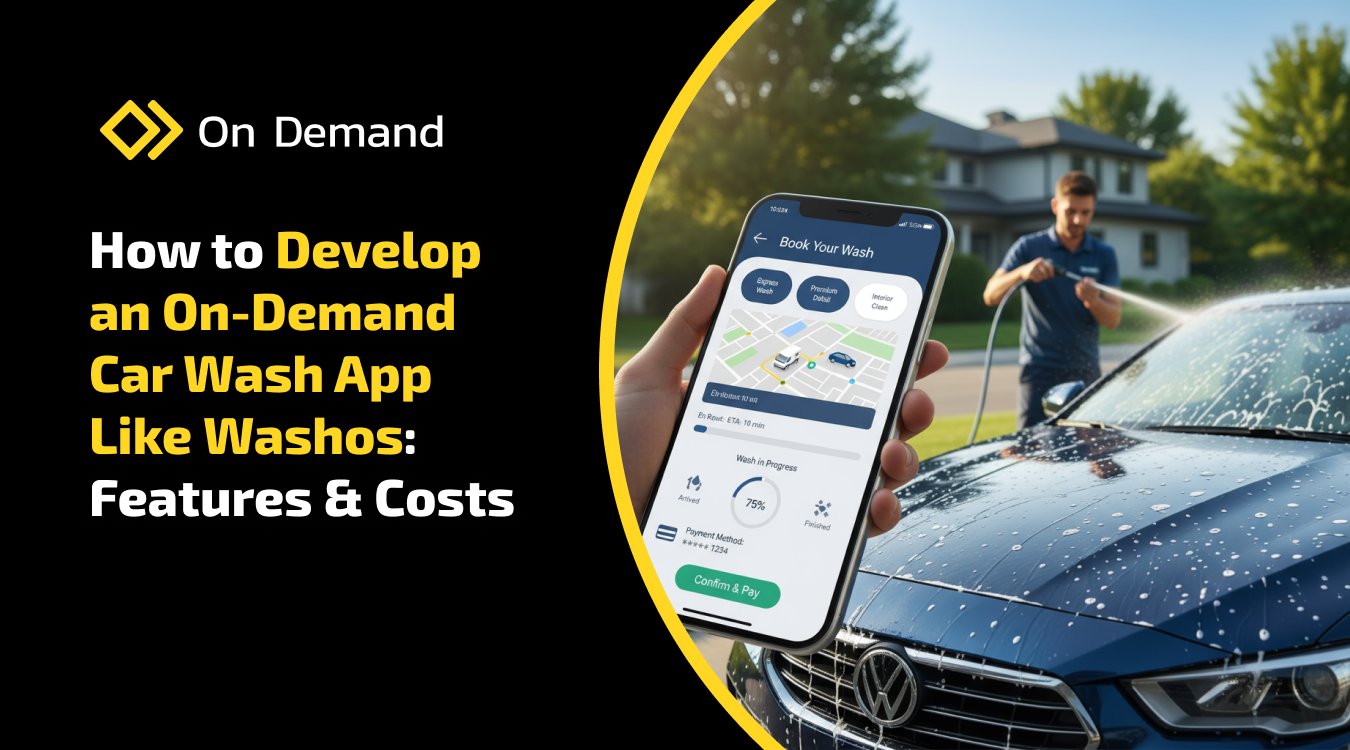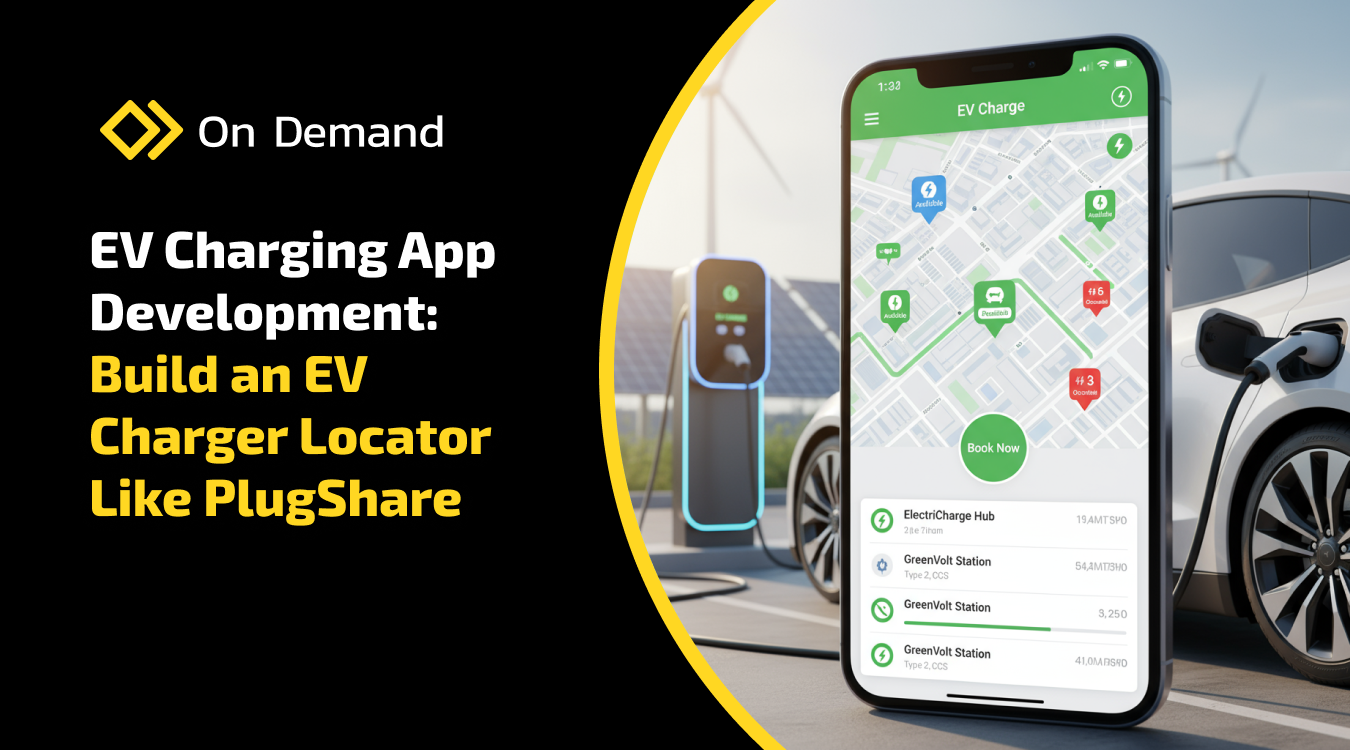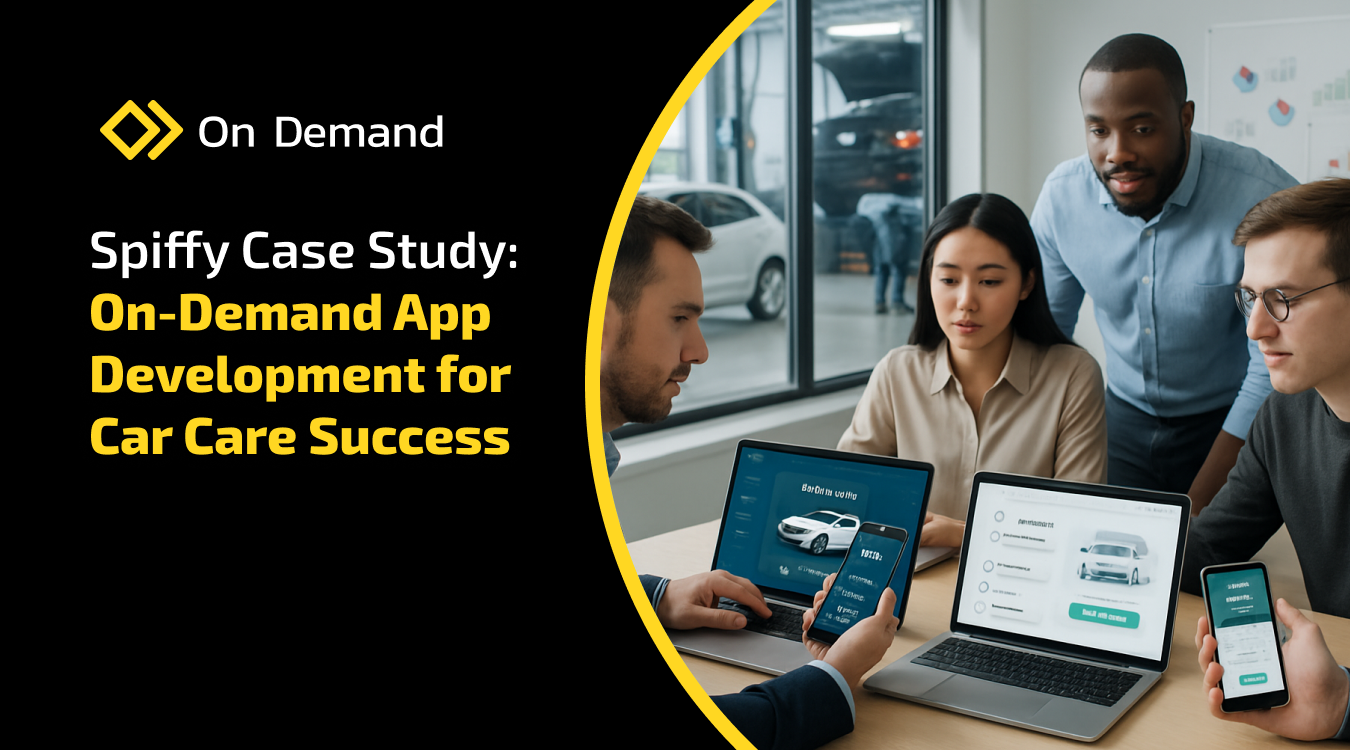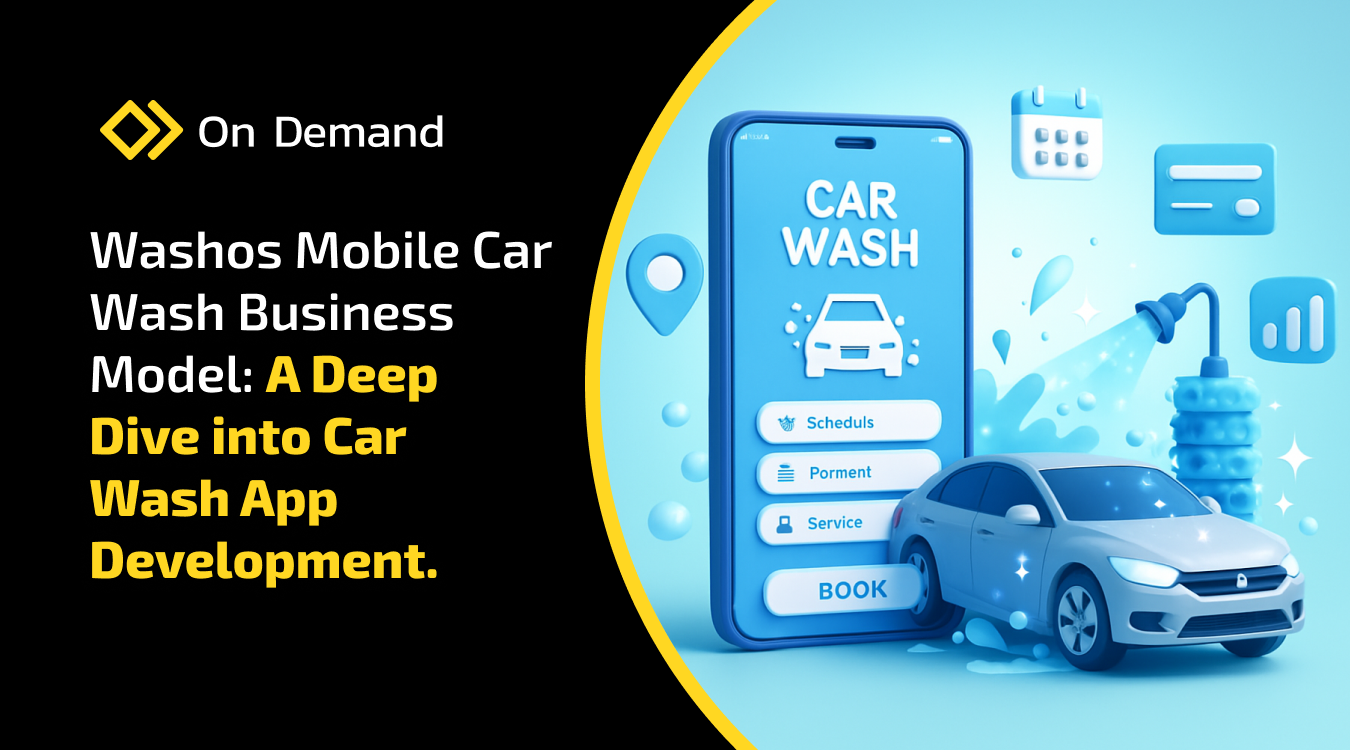Posted At: Nov 05, 2024 - 1,760 Views
10 minutes to read
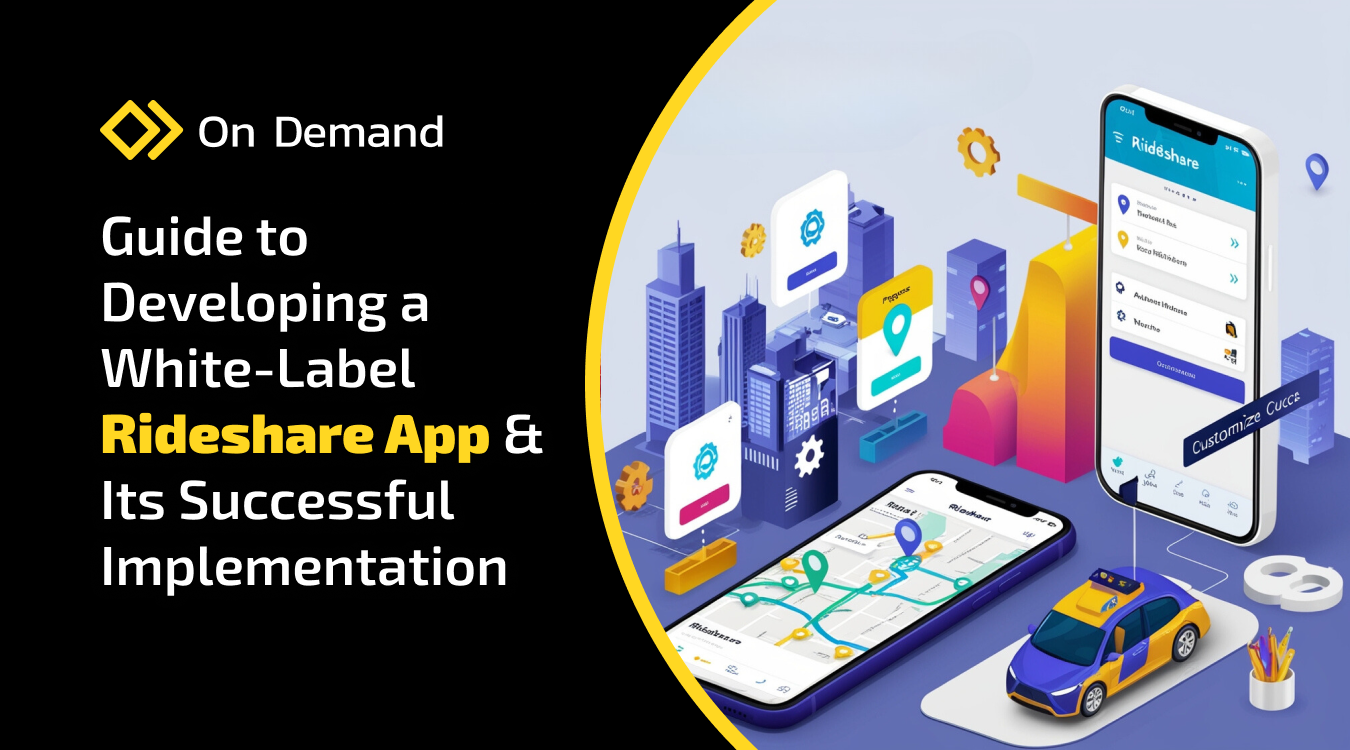
White-label rideshare app development solutions have rapidly revolutionized users' connection with drivers in the fast-moving world of Transportation. A rideshare platform can be an incredibly lucrative opportunity as more people are demanding easy, convenient travel options. In this full guide, you will see the basic steps required for developing a white-label rideshare app, take a look at the vital technologies used in it, and get hold of successful ways to execute it. Now, let us have a glimpse into the interesting development of the rideshare app! Let’s dive into the exciting world of rideshare app development!
Understanding the White-Label Rideshare App Development Solution
White-label rideshare app development service enables businesses to market their rideshare platform using pre-designed and customizable software. Its key advantage is that it drastically cuts the development time and costs for entrepreneurs thus enabling them to concentrate more on branding and marketing. Using a ready-made rideshare app companies can offer a robust product with features that equate to top industry leaders without having their own in-house technology.

Why Choose White-Label Solutions?
- Cost-Effective: It can help to save big on your app development expenses when you use a prebuilt framework instead of building the app from scratch.
- Time-Efficient: These readymade rideshare app solutions enable quick deployment, getting to the market faster, and capitalizing on current trends.
- Customization: Ensure the app is designed for your consumer needs and improves user experience.
- Proven Technology: Use already proven features and system functionalities that are currently trending on the market.
Steps to Create a White-Label Rideshare App
A structured approach is used to create a successful white-label rideshare app . Here are the key steps involved:
1. Define Your Business Model
Depending on your readymade rideshare app business model, your platform for ride-sharing will determine how you monetize it. Consider options such as:
- Commission-Based Model: Start charging drivers a percentage of each fare.
- Subscription Model: Offer drivers and riders premium features for a flat monthly fee.
- Hybrid Model: Provide multiple revenue streams by combining commission and subscription.
2. Market Research
To understand your competition and audience it’s essential that you conduct thorough market research. Find out what the gaps in the market are and create your app to fill those gaps. Focus on:
- Competitor analysis
- Target audience profiling
- Ridesharing market trends now
3. Choose Key Features
Essential features can make or break your readymade rideshare app business model. Prioritize user experience by integrating functionalities that enhance usability, such as:
- User Registration and Profile Management: Onboard users and drivers faster.
- Ride Booking and Scheduling: It allows users to book a ride on demand or to schedule them in advance.
- In-App Navigation: Build connectivity using maps and GPS tracking for smooth navigation.
- Rating and Review System: Feedback allows the fostering of trust and improvement of service quality.
4. Ridesharing App User Experience Focus
User retention can be achieved by a well-designed ridesharing app user experience. Ensure the following:
- Intuitive Interface: Build a simple, and yet engaging interface that is simple and easy to navigate.
- Fast Loading Times: Make the app fast to give user satisfaction.
- Multiple Payment Options: Consider many payment methods for the user’s convenience.
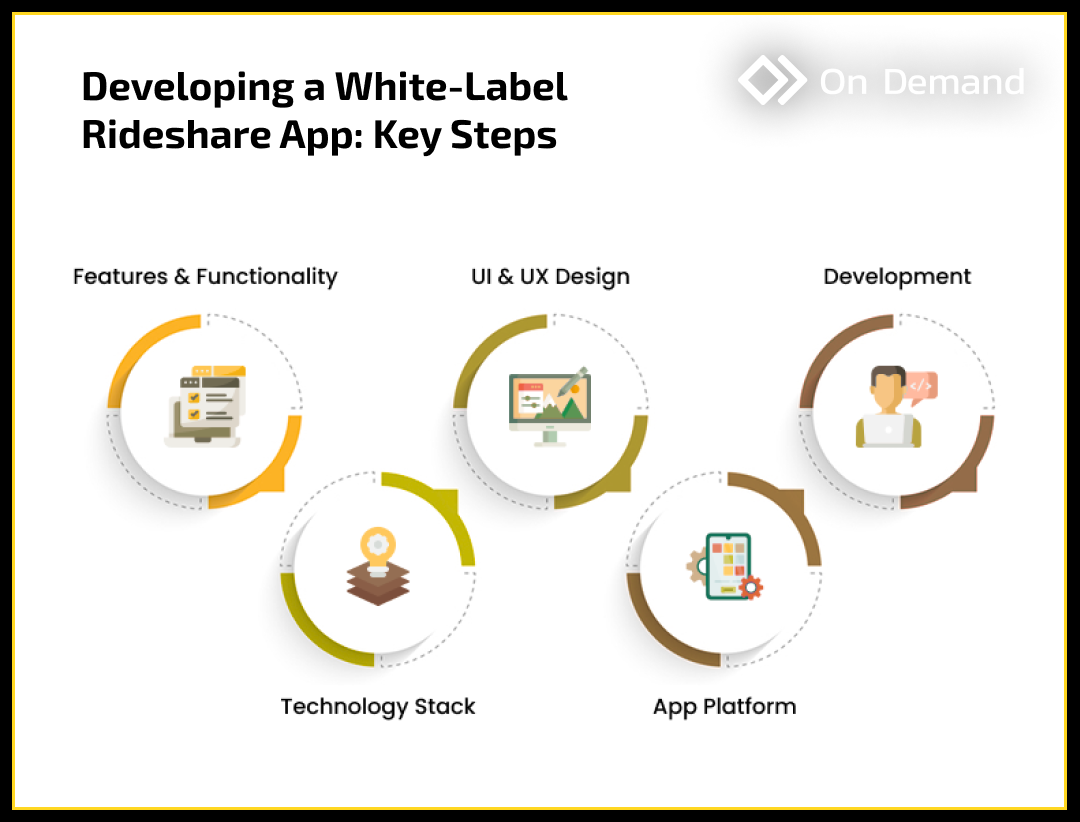
5. Select Key Technologies in Ridesharing Apps
To implement successfully, it’s essential to understand the key technologies in ridesharing apps. Here are the fundamental components:
- GPS Tracking for Ridesharing: For real-time location tracking, knowing where your driver is, is essential.
- Cloud Infrastructure: This helps us to store and scale our data as well as scale our application performance.
- API Integrations: Third-party services will be ensured with good interaction between the app and such services as payment gateways and mapping services.
6. Develop a Prototype
By creating a prototype, you see clearly how the app will work. This is an opportunity to gather feedback and do some tweaking before a large considerable investment in development.
7. App Development and Testing
The mobile app development phase follows when the prototype is approved. Focus on:
- Backend Development: Basic server setup, database, and application logic.
- Frontend Development: Implement a UI for both driver and rider apps.
- Testing: Identify and resolve bugs in strict tests. Gather those valuable insights by using beta testing with real users.
8. Launch Your App
Run a well-crafted marketing strategy before launch. Promo your app using different channels — social media, SEO, influencer partnership, etc.
9. Post-Launch Support and Maintenance
Once you have your launch, focus on customer support and app maintenance first. Regular updates and enhancements are crucial for keeping users engaged and addressing their concerns promptly.
Read More:- Top 12 Carpooling and Ridesharing Apps Revolutionizing Global Travel
Cost Structure of Rideshare App Development
To budget, you have to know what it costs to make a ridesharing app. Here’s a detailed overview of what you can expect based on regions:
Region | Estimated Cost Range |
United States | $50,000 - $150,000 |
United Kingdom | $40,000 - $120,000 |
United Arab Emirates | $35,000 - $110,000 |
Factors Influencing Development Costs
Feature Complexity: More advanced features will take more development time and costs.
Design Requirements: Template-based solutions will take fewer resources but custom designs take a lot of resources to come to fruition.
Developer Location: Hiring developers is quite expensive, and its price changes a lot depending on the region.
Technology Stack: The overall budget is dependent on the technology used (native vs. cross-platform).
Benefits of a White-Label Rideshare App

- Quick Market Entry: A white-label rideshare app empowers a brand to launch its service pronto. By using a ready-made solution, you can get started almost immediately and can take advantage of the market demand without the bottleneck of unnecessary development delays.
- Cost Efficiency: Through a pre-built platform the overall development costs are easier. It is an approach that helps businesses use resources more efficiently for marketing and customer acquisition instead of investing lots of money in development.
- Customizability: The app is a ready-made solution but businesses can easily get it to fit their branding and requirements for specific users. This flexibility ensures that your vision can be represented in the app.
- Scalability: White label app can grow with your business. The app can grow with you as your user base increases without the readymade rideshare app’s performance suffering.
- Access to Advanced Features: Most of these apps come ready with the latest technologies and features, including real-time tracking and quick payment options, right inside the app by its accessories.
- Technical Support: Ongoing technical assistance is provided by many white label solutions that are paramount to solve and serve the issues facing the software, after launch, to provide an excellent user experience.
Core Features of a White-Label Rideshare App
- User-Friendly Interface: User experience is improved by a simple and intuitive design that allows all riders and drivers to navigate the app with ease.
- Registration and Profile Management: The app should have a quick, easy registration process and a way for the user to manage their profile so it is a personal experience.
- Ride Booking System: On-demand ride booking is simple and allows users to instantly book a ride or schedule a future one depending on their needs.
- GPS Tracking: The benefit it offers is real-time tracking of drivers, allowing you to know when your ride will arrive, as well as when a driver started or ended your ride.
- In-App Payment Integration: Users should have multiple payment options where they can comfortably pay using credit/debit cards and digital wallets.
- Rating and Feedback System: This provides the opportunity for users to rate their experience and give feedback on how to ensure the app’s quality assurance and bring brand awarness to the community.
- Admin Panel: Users can be easily managed, rides can be easily monitored and performance metrics analyzed all thanks to a comprehensive admin dashboard.
- Push Notifications: A notification must be sent timely about ride confirmation and driver arrival as well as with promotional offers that will keep the app’s users informed and engaged.
- Multiple Vehicle Options: There are different types of vehicles chosen depending on the user’s preference and demand to meet their requirements and it improves the overall service experience.
Read More:- How to build a successful ride-sharing app Like Gett, Juno Rideshare App
Conclusion: Implementing Your Readymade Rideshare App Successfully
Building a white-label rideshare app is a thrilling endeavor that needs thorough deliberation and execution. Following the steps in the present guide, you’ll have the ability to create a robust and user-experienced platform considering market demands. For the most optimal chances of gaining success, ensure you enhance user experience and use the right technologies. The rideshare industry is booming and you too can be one of the leaders in this competitive space if you set your journey right.
With that knowledge and tools, your business can aptly harness the positive market trends favoring white-label rideshare apps. Take a chance, and see how your white-label rideshare app will change the way people move globally!
Frequently Asked Questions (FAQs)
1. What is a white-label rideshare app?
A white-label rideshare app is a pre-built software solution that businesses can customize and brand as their own. This means companies can enter the rideshare market quickly without developing an app from scratch, saving both time and resources.
- Advantages:
- Cost-effective development
- Rapid market entry
- Easy customization options
- Many providers offer ongoing support, making it easier for businesses to manage their apps post-launch.
2. How does GPS tracking work in ridesharing apps?
GPS tracking allows both drivers and passengers to see real-time locations within the ridesharing app. This technology enhances safety and improves user experience by providing accurate arrival times.
- Key features include:
- Real-time tracking of drivers
- Estimated time of arrival (ETA)
- Route optimization for drivers
- GPS technology is essential for user trust and satisfaction, as passengers can monitor their rides in real time.
3. What are the key technologies in ridesharing apps?
Key technologies include GPS tracking, cloud infrastructure, and API integrations. These components ensure a seamless user experience and operational efficiency.
- Notable technologies:
- GPS Tracking: For real-time location updates.
- Cloud Infrastructure: Enables data storage and scalability.
- API Integrations: Connects to third-party services for payments and navigation.
- Choosing the right technologies is crucial for the success of a rideshare platform.
4. How can I improve the user experience in my rideshare app?
To enhance user experience, focus on intuitive design, fast loading times, and multiple payment options. A user-friendly interface and efficient navigation will keep users engaged.
- Tips for improvement:
- Implement an easy registration process.
- Offer diverse payment methods for convenience.
- Optimize app speed to reduce waiting time.
- An excellent user experience leads to higher retention rates and positive reviews.
5. What are common rideshare app business models?
Common business models for rideshare apps include commission-based, subscription-based, and hybrid models. Each model offers different revenue streams and market strategies.
- Popular models:
- Commission-Based: Charging drivers a percentage per ride.
- Subscription-Based: Monthly fees for premium features.
- Hybrid: A combination of both models for diverse income sources.
- Selecting the right model is essential for financial sustainability and growth in the competitive rideshare market.



